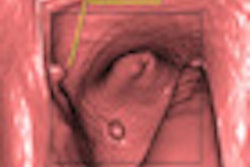In parts of the world with widespread, sustained mammographic screening, trends in advanced breast cancer incidence do not bear out that regular screening leads to a decline in mortality, according to a study published online in the Annals of Oncology.
Lead author Philippe Autier, MD, of the International Prevention Research Institute (iPRI) in Lyon, France, and colleagues assessed incidence trends of advanced breast cancer in areas where mammography screening had been practiced for at least seven years with a minimum participation of 60%, and where there existed a population-based registration of advanced breast cancer. They found surprising differences between the results of randomized trials and screening mammography programs as applied in general populations (Annals of Oncology, January 20, 2011).
The impact of screening mammography can be determined by the rate of advanced cancers, according to Autier and colleagues.
"Mammographic screening aims to detect cancer at an earlier stage that would be less life threatening and easier to cure than if detected clinically," they wrote. "[Therefore], a reduction of advanced cancer incidence should reflect the impact of screening activities alone, thus providing an estimate of the contribution of screening to the observed mortality decrease."
But recent studies have posited that breast screening may increase the burden of low-risk cancers without reducing the incidence of more aggressive tumors. To investigate this, Autier's team performed a Medline search between January 1990 and June 2009 for published data on incidence trends of advanced breast cancer in geographical areas with well-established mammography screening programs.
The researchers used eight studies published in peer-reviewed journals relating to mammography screening programs in Australia, Italy, the Netherlands, Norway, Switzerland, the U.K., and the U.S. The percentage of all eligible women participating in mammography screening in these countries was fairly high, ranging from 60% in Italy to 88% in the U.S.
Autier's team found that age-adjusted annual percent changes -- a method of characterizing trends in cancer rates over time -- were stable or increasing in 10 geographical areas. In four, there were transient downward trends followed by increases back to prescreening rates. Breast cancer mortality fell after 1990 in all the geographical areas included in the study, with annual percentage changes ranging from -1.7% to -2.5%. But these mortality decreases often started before the screening program began, or before it was offered to a majority of women, the researchers wrote.
Autier's team expected to see declines in the incidence rate of advanced breast cancer correlating with the implementation of screening programs. Instead, the researchers found that incidence rates of advanced breast cancer didn't change much, despite seven to 15 years of fairly high-level participation in mammography screening.
"For instance, in the Netherlands, trends in the falling incidence of advanced cancer for the first seven years of screening were compatible with the results of most trials," the authors wrote. "However, incidence rates in 2003 were close to initial values in 1989 just before the launch of the national breast screening program. Likewise, the rates of advanced breast cancer in the U.S. in 2000 were nearly back to levels before screening started."
Unclear data interpretation?
But the study's data interpretation method is unclear, according to Daniel Kopans, MD, of Massachusetts General Hospital and an official with the American College of Radiology (ACR).
"It is unclear what these authors were actually looking at and how they arrived at their conclusions," Kopans told AuntMinnie.com. "[The study authors] purport to look at the rate of advanced cancers relative to the onset of mammography screening in various countries, but their graphs of Ireland, Italy, Scotland, Victoria and Tasmania, and the Netherlands do not show the rate of advanced cancers before screening began. How can they compare before and after if they only have after?"
Randomized trials of breast cancer screening have concluded that annual mammography for women ages 50 to 69 decreases breast cancer mortality by 20% to 25%. But results from the survey from Autier and colleagues do not support this, he wrote.
What is a possible reason for this modest or negligible reduction in the incidence of advanced breast cancer? It's unlikely that in the absence of screening advanced breast cancer incidence would increase as did the incidence of early breast cancer, Autier and colleagues wrote: Making mammography breast cancer screening widely available has provoked the increased incidence of small, low-malignancy potential lesions.
The authors concluded by urging the collection of more data to further measure the effects of mammographic breast cancer screening.
"Cancer registries should as a matter of routine collect size of breast cancers and the screening status," they wrote.
Whether it is mainly large cancers that make up the bulk of the mortality rate is open to debate, Kopans said.
"The authors do not address [the fact] that the randomized, controlled trials of screening [demonstrated] saved lives by downsizing cancers within stages," he said. "It is not only the very large, advanced breast cancers that kill. In the past, at least 30% of women who had negative axillary lymph nodes still died from their breast cancers. It is the decrease in size of all cancers that they should be looking at, not just the largest."
AuntMinnie.com could not reach Autier for comment.
By Kate Madden Yee
AuntMinnie.com staff writer
February 18, 2011


















